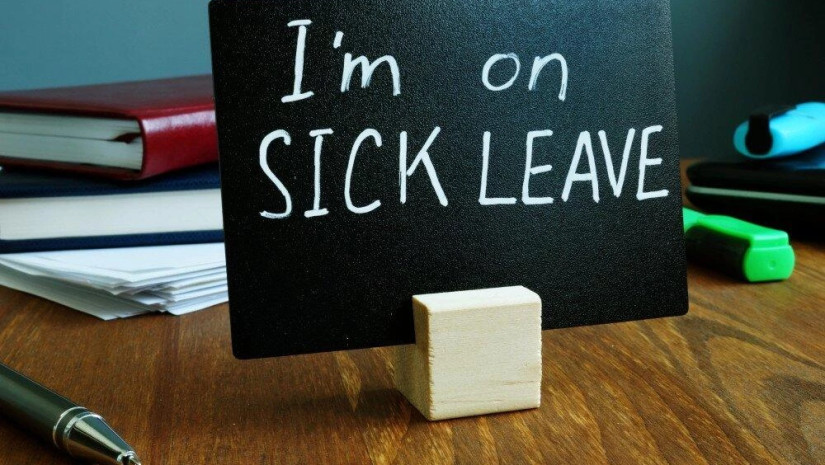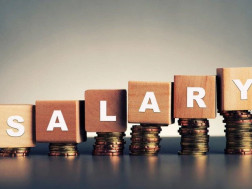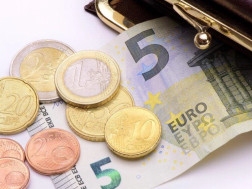At the height of the coronavirus pandemic, German doctors were authorised to grant sick leave to patients over the phone.
But the special measure to avoid unnecessary contact with COVID-19 patients expired at the end of March. It had been in place for three years.
Workers now have to pay physicians an old-fashioned visit to receive a sick note, though patients may still be able to get one from their general practitioner via video call.
The move is expected to help reduce fraudulent claims. Is that because more people call in sick when there are generous schemes in place? And how do paid leave allowances compare across the continent?
In the EU, Germany ranks first in sickness and health benefits expenditure - attributing 11 per cent of its GDP to sick leave and public medical care. It’s followed by France and the Netherlands (both at 10.2 per cent), according to the EU’s statistical office, Eurostat.
The countries that allocate the least to sickness and health benefits are Estonia (4.9 per cent), Lithuania (5 per cent), Poland, Hungary and Ireland (all 5.5 per cent).
According to 2020 figures, Germany is also the country that spends the most on sick leave benefits, specifically. The country allocates 2.3 per cent of its GDP to support sick employees. It’s followed by the Netherlands (2.1 per cent), Sweden (1.7 per cent) Spain (1.5 per cent) and Luxembourg (1.4 per cent).
The 2020 rankings may have been influenced by the coronavirus pandemic, but if we look at the 2018 figures, the countries with the highest expenditure are almost the same, except for Spain, which didn’t spend so much a few years back.
Does generous paid leave encourage people to call in sick?
You might assume that countries spending more on sick leave would be the ones where people take more time off work. But the reality is counterintuitive.
At the end of 2022, the countries with the biggest share of employed people absent from work were France (14.9 per cent) Finland (14.8 per cent), Sweden (14.7 per cent), Denmark (13.6 per cent), Estonia (13.2 per cent) and the Netherlands (12.4 per cent).
The nations where people are the least absent from work are Romania (2.5 per cent), Bulgaria (2.9 per cent), Greece (4.9 per cent), Poland (5.8 per cent) and Serbia (5.9 per cent).
It’s worth noting that the EU’s average rate of absences from work is significantly higher for women (12.1 per cent) than for men (7.8 per cent). A 2018 study by the Norwegian Institute of Public Health academics identified “work and family stressors” as the “most significant” explanation for this gender gap.
The countries reporting the most absences from work do not match the ones spending the most on sickness and health benefits. However, they are among the ones where paid leave conditions are the most generous, either in amount or duration.
The European countries with the most generous sick pay
The following list of countries has been curated by Euronews Next and should be interpreted with caution.
There are many rules and conditions surrounding eligibility for paid leave. For example, in some countries, it is only an option for those who have made sufficient contributions to their social security organisms in a reference period preceding the incapacity for work.
Some countries also have conditional exceptions that allow an increase in the amount given as aid, for example, if the person has a contagious infection like tuberculosis or HIV.
Luxembourg
Amount of benefit: Companies in Luxembourg are required to pay workers on sick leave their full salary for around three months - to be precise, for 77 days or until the end of the calendar month during which the 77th day of work incapacity occurs.
Duration of benefit: If the work incapacity lasts beyond this period, the health insurance body grants an extension for up to 78 weeks (1.5 years).
Estonia
Amount of benefit: 70 per cent of the reference wage from the public health insurance fund from the second day of sick leave.
The reference wage is determined based on the average wage of the last six months and on social tax payments made during the previous calendar year.
Duration of benefit: Up to 182 consecutive calendar days of paid sick leave, with a maximum of 240 days per year.
Finland
Amount of benefit: Workers can claim a sickness allowance nine working days after their illness begins. The employer generally pays the employee's wages during this waiting period, and many also pay the full salary during the first one or two months.
Then, Kela - the Social Insurance Institution of Finland - picks up the allowance, based on the worker’s average annual income.
Duration of benefit: Up to 300 working days (about a year).
Sweden
Amount of benefit: Approximately 80 per cent of salary, but it can be higher if there’s a collective agreement.
Duration of benefit: 364 days, but an extension is possible with paid leave then amounting to 75 per cent of the worker’s income.
However, if the person in question is seriously ill, they can continue claiming sickness benefits equivalent to 80 per cent of their salary beyond this limit.
France
Amount of benefit: Depending on the type of illness and professional status, the benefits may differ. But the daily allowance is typically 50 per cent of a worker’s reference wage.
The gross reference wage, however, is capped at €2,885.61 per month, meaning the daily allowance paid cannot exceed €47.43 per day. But when the sick leave exceeds three months, that daily allowance may be reassessed and increased.
Duration of benefit: If the worker’s health condition warrants it, sick leave can last up to three years.
Portugal
Amount of benefit: The longer the sick leave, the better it’s paid. While sick leaves of under a month are covered at 55 per cent of a worker’s average income, that rate goes up to 70 per cent for an illness lasting over three months, and 75 per cent for sick leaves of over a year.
Duration of benefit: Up to 1,095 days (three years).
In other words, France and Portugal are very generous when it comes to the length of paid leave rather than the amount covered for each sick day.
Latvia
Amount of benefit: The first day of illness is not paid, but the employer must pay sick leave from the second to the 10th day at least at 75 per cent of the worker’s average daily earnings.
From the 11th day of illness, the State Social Insurance Agency grants sickness benefits amounting to 80 per cent of average earnings.
Duration of benefit: Up to 26 weeks (six months).
Lithuania
Amount of benefit: Lithuania’s public insurance picks up the bill from the third day of sickness at 62 per cent. It is, however, very common for employers to top this up to reach 100 of the employee’s salary.
Duration of benefit: Up to 90 calendar days in a calendar year.
Germany
Despite leading the ranking in terms of GDP allocated for sickness and health care benefits, Germany is not among the most generous when it comes to paid sick leave allowance, but rather average when compared to other EU countries.
Amount of benefit: Full salary for up to six weeks. Past this period, workers receive sick pay from the health insurance company, representing 70 per cent of their regular salary.
Duration of benefit: Up to 78 weeks (1.5 years) over a period of three years for the same illness.
UK
Sick pay in the UK, the world’s sixth-largest economy, might sound less generous when compared to the benefits offered by some EU countries.
Amount of benefit: Workers in the UK are entitled to £109.40 (€123,91) per week from the fourth day of illness. But some may get more if the company has a sick pay scheme.
Duration of benefit: up to 28 weeks. After that time is up, those too ill to go back to work may be eligible to apply for employment and support allowance (ESA), which grants between £74.35 and £113.35 per week.
Is paid allowance generosity based on affluence?
Only some of the countries listed are above average in the EU’s index of GDP per capita. However, most of them feature among the top 30 happiest nations in the World Happiness Report, which highlights that people are more satisfied with their lives in countries where there is institutional quality and welfare state generosity.
European countries offer some of the most generous sick leave packages in the world. And even the countries with the lowest GDP per capita in the EU, such as Bulgaria, Slovakia and Greece, offer better social protection benefits than some of the world's wealthiest countries, such as the United States, where no federal law provides a right to paid family or medical leave, Euronews reports.
















